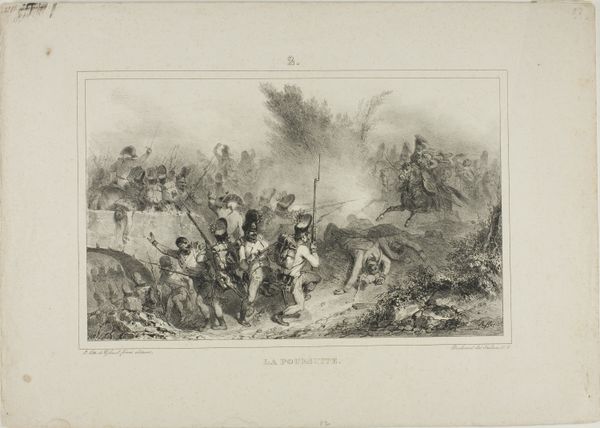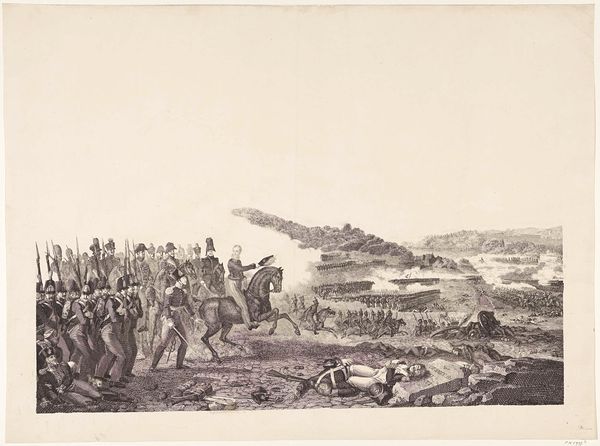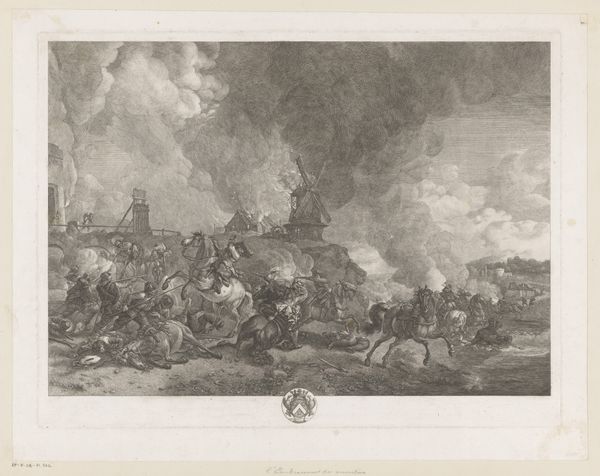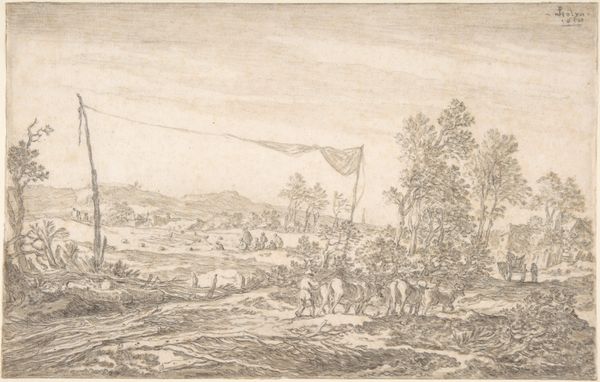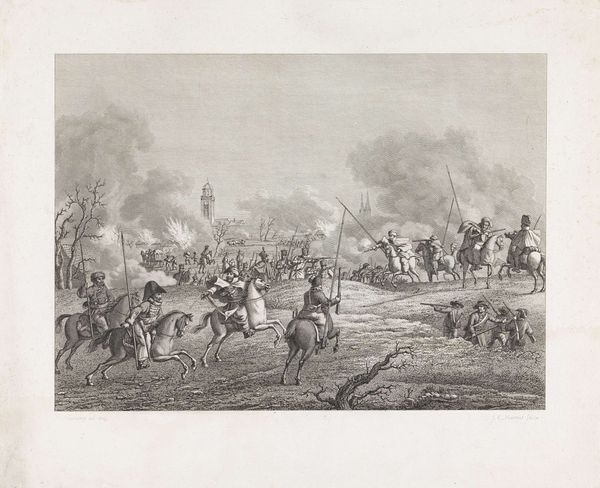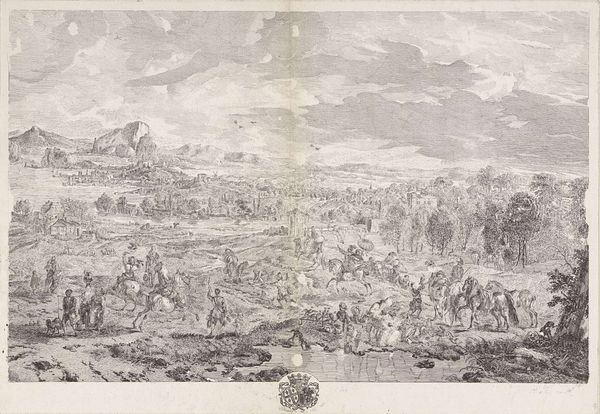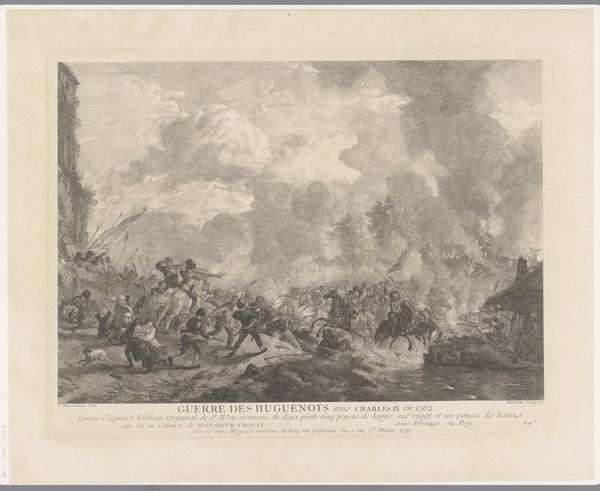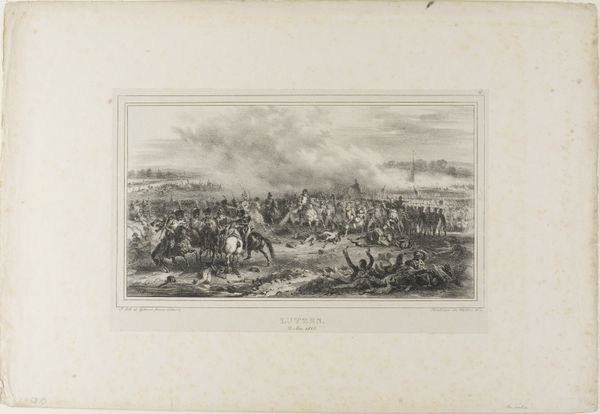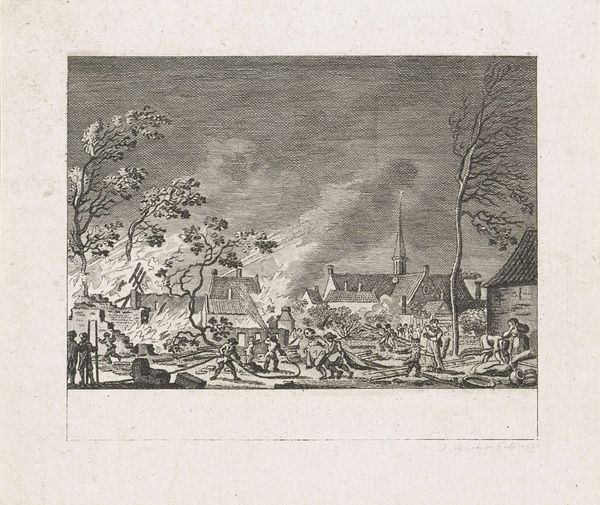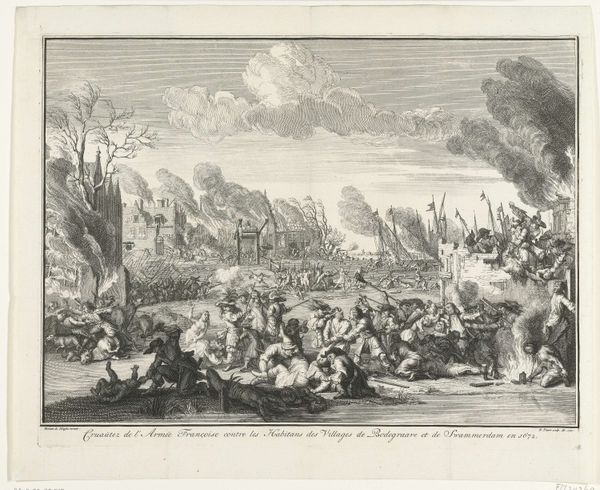
engraving
#
baroque
#
landscape
#
history-painting
#
engraving
Dimensions: height 487 mm, width 556 mm
Copyright: Rijks Museum: Open Domain
Curator: This is "Siege of the Castle of Namur, 1695" by Jan van Huchtenburg, currently held here at the Rijksmuseum. As you can see, it is an engraving, rendering a tumultuous historical event. Editor: It certainly evokes a scene of tension. There’s a sharp contrast between the clustered figures in the foreground and the implied chaos in the background – a city ablaze. I'm immediately drawn to the weariness conveyed through the posture of the animals. Curator: Huchtenburg was known for his battle scenes. The image captures the Siege of Namur during the Nine Years’ War, a pivotal moment when William III of England recaptured Namur from the French. Its significance lies in how it reflected and shaped nationalistic sentiment in the Dutch Republic at the time. Editor: Considering the detailed lines achievable in engraving, you can really see the impact labor has in achieving this level of detail in each figure, in the animals, and especially that citadel perched high on the hill! The scale makes it possible for mass consumption of such militaristic propaganda. Curator: Indeed, engraving was key to disseminating such imagery to a broad audience. It served a propagandistic function, reinforcing the narrative of Dutch military success and royal strength to unify the populace around the Prince of Orange. Editor: The way it's presented also suggests that there is a certain hierarchy present. The fallen or resting animals compared with the looming power conveyed by the castle reinforces the message of domination. Curator: Yes, absolutely. And by portraying William III as the victor, Huchtenburg contributed to solidifying his legacy and leadership in the eyes of the Dutch public and beyond, ensuring the image’s lasting power as a political symbol. Editor: Seeing the meticulous handwork and considering the wider context makes it clear how much thought and labor was involved in producing this seemingly simple print! Curator: Precisely. It allows us to reflect on the relationship between art, power, and the shaping of collective memory during times of conflict. Editor: It's certainly given me a lot to think about – the work and social context is fascinating!
Comments
No comments
Be the first to comment and join the conversation on the ultimate creative platform.

